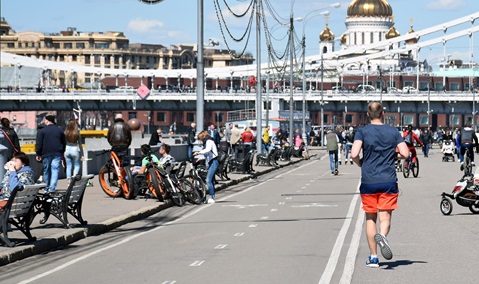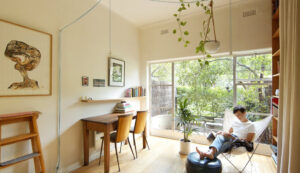Life, activities, and interactions in cities depend on urban planning. It influences the design of streets and parks and the layout of homes, schools, and workplaces. These design choices have a major impact on the ability and motivation of residents to take positive action. Urban authorities and designers can encourage walking, biking, and other physical activities by carefully designing the urban environment. Such activity improves public health, transportation, and quality of life for everyone.
Create Walking Communities to Encourage Movement
Pedestrian-friendly areas are one of the best ways urban design can encourage movement. In walkable communities, residents can walk to businesses, schools, parks, and other attractions. When people can get things done without having to drive, they will naturally travel more often. The walking area includes sidewalks, safe crossings, and pedestrian-friendly traffic signals. Mixed-use developments, such as housing, retail, and recreational space, also reduce travel times, making walking and biking simple and enjoyable.
Expand Cycling Infrastructure to Encourage Cycling
Urban planning that promotes bike lanes and bike-friendly roads can encourage cycling and exercise. Specially designed, protected bike lanes separated from car traffic make cycling safer and more attractive for people of all ages and abilities. Urban developers can encourage cycling by installing bike racks and bike-sharing stations. By adding cycling infrastructure to urban transportation systems, planners can encourage residents to use bicycles for commuting, shopping, and recreation. Such initiatives can minimize air pollution and car use and increase physical activity.
Design Parks and Green Spaces for Relaxation
Active city living requires parks and green spaces. Well-planned parks provide opportunities for residents to walk, play sports, do yoga, or simply enjoy nature. Green spaces encourage outdoor activities, which improve physical and mental health. Urban planners can create parks with walking trails, playgrounds, exercise equipment, and picnic areas that are suitable for all ages. Social connections and a sense of community in green spaces can encourage people to spend more time outdoors and stay active.
Choosing Public Transport Can Reduce Car Dependency
Convenient and efficient public transport can promote active living in developing cities. People who travel by bus, train, or tram walk or cycle to and from stops, which increases their movement throughout the day. When planning for public transport, safe pedestrian and cycle paths connect residential areas to transport hubs. By reducing the use of personal vehicles, traffic and pollution are reduced, the environment becomes healthier, and outdoor activities are encouraged.
Improve Safety and Ease Congestion
There are safety concerns in urban areas related to walking and cycling. By lowering speed limits, installing speed bumps, extending curbs, and creating pedestrian islands, streets can be made safer for pedestrians. When streets are safer, walking and cycling become more popular among young and old. These design features help urban planners create safe, active environments.
Encouraging Accessible Urban Design
Urban design should consider the needs of all citizens, including children, the elderly, people with disabilities, and people with reduced mobility, to promote active lifestyles. Wide, flat, and barrier-free sidewalks and crosswalks are ideal. Public spaces should have benches and sheltered areas for rest and exercise. Inclusive design ensures that everyone can exercise, regardless of age or ability. Cities that emphasize accessibility promote equal access to mobility and outdoor recreation.
Encouraging Community Participation in Urban Planning
Urban places that promote active lifestyles require community input. Residents are more aware of the facilities that enable them to move. Urban developers can gain input and support from the community through workshops, surveys, and public meetings. When people feel responsible for the design of their neighborhoods, they use and maintain public spaces better. This process creates a virtuous circle of active living.
Integrating Technology and Smart Design for Active Cities
Technology can also facilitate movement in modern urban planning. Smart cities use sensors and apps to provide real-time data on traffic, air quality, and entertainment. Interactive maps and fitness challenges encourage communities to explore. Data analytics can also help planners prioritize improvements to pedestrian and cyclist infrastructure. Cities can encourage active lifestyles by combining traditional design with digital innovation.
Balance Density and Open Space to Promote Healthy Lifestyles
Urban environments with high population density can discourage outdoor activities if there is little open space. Good urban planning balances population density, parks, plazas, and recreational activities. Compact, walkable communities need green spaces for recreation and exercise. Mixed-use developments, rooftop gardens, and pedestrian streets encourage activity without reducing urban density. This balance creates vibrant, comfortable communities where people live, work, and play.
The Long-Term Health and Environmental Benefits
Urban planning that promotes active living does more than just improve health. By driving less, we can reduce air pollution and greenhouse gas emissions. Chronic diseases such as obesity, diabetes, and heart disease can be reduced through exercise. Active urban environments promote social cohesion and mental health by providing safe, attractive places for people to gather and engage. Cities designed for active lifestyles are more sustainable, resilient, and welcoming.
Conclusion
Urban planning has enormous potential to transform urban life. With walkability, cycling infrastructure, green space, public transportation, and safety, designers can create environments that encourage more movement. Community engagement and inclusive design ensure that these areas meet the needs of all residents. Technology and a balance of density and open space improve urban living. Communities with active lifestyles are healthier and happier. With thoughtful urban planning, we can build cities and create a healthier future.
FAQs
1. How does urban planning affect sports?
Urban planning affects living and mobility conditions. Sidewalks, bike paths, parks, and public transportation make it safer and easier to walk, bike, and stay active.
2. What does a walkable neighborhood look like?
Walkable neighborhoods have safe sidewalks and crosswalks so residents can walk to shops, schools, parks, and work.
3. Why is cycling infrastructure important?
Safe and comfortable bike paths protect cyclists from traffic congestion and make cycling easier.
4. How do parks promote active lifestyles?
Parks are places where people can exercise, relax, and socialize. This feature encourages people to spend more time outdoors.
5. Can public transportation promote exercise?
People walk or bike to bus stops and also exercise during their commute.




